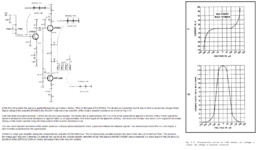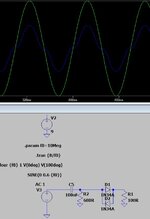neazoi
Advanced Member level 6
I would like to see if it is possible to design an anti-log (exponential) HF preamplifier.
One idea might be a conventional amp with a log amp in the feedback loop.
Can anyone with simulation skills or good ideas help me in that direction?
I love discrete transistors circuits, if this can be done that way.
One idea might be a conventional amp with a log amp in the feedback loop.
Can anyone with simulation skills or good ideas help me in that direction?
I love discrete transistors circuits, if this can be done that way.



